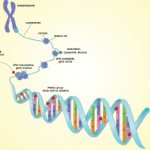Changes in the epigenome can help determine which genes are turned on or off & can be triggered by a variety of environmental elements, such as stress, physical activity & lifestyle choices.
Moving Away from Inherent Biases
The results produced 12 terabytes of data for further analysis using the novel method developed by the researchers’ computational team, led by UCSD’s Wei Wang, PhD, professor of chemistry, biochemistry, and cellular and molecular medicine. That platform was designed to integrate and reduce the number of epigenetic combinations in the genes of patients with RA, opening the door to discovery of new cell signaling pathways, says Dr. Firestein.
“Dr. Wang and his colleagues developed an algorithm that allowed us to take multiple ways of looking at epigenetic marks and combine them into a single snapshot,” says Dr. Firestein, noting the platform provides a way to investigate disease pathogenesis in an unbiased manner and without preconceived notions of data types that are otherwise difficult to analyze together.
“We had a completely open mind in terms of what genes, pathways and targets we might identify,” says Dr. Firestein. “We allowed computationally determined pathways to emerge and determined which are most likely to be involved in RA. We then, of course, have to biologically validate the genes and pathways. That process is quite different from the inductive logic that is commonly used in research, where you read the literature, think about a project and then ascertain what the next logical step might be.
“That approach, by the way, can be exceptionally valuable and has led to many breakthrough therapies,” adds Dr. Firestein. “However, our view was that breakthroughs in the future would require moving away from some of those inherent biases and learning what could not be predicted from reading the literature.”
Finding the Huntington’s Disease Overlap
Many unexpected pathways emerged from the analysis, says Dr. Firestein. The most prominent among them was an apparent overlap with Huntington’s disease.
“We found that overlap particularly striking,” he says. “Almost no matter how we analyzed the data, the Huntington’s disease pathway almost always emerged as the top difference between rheumatoid arthritis and non-rheumatoid arthritis.”
The research identified a pathway overlap of the gene Huntington-interacting protein-1 (HIP1) and RA. The protein is known to regulate cancer cells, but its potential role had not been explored in inflammatory diseases, according to the article.
“We were able to show that interfering with the expression of that gene (HIP1) made cells from the disease joints in RA much less aggressive,” says Dr. Firestein. “This provided some biologic validation and suggests that the pathway and the genes within the pathway could be targeted to treat rheumatoid arthritis and possibly Huntington’s disease.”
Huntington’s disease is a terminal neurodegenerative disease of the brain and differs greatly from RA, an autoimmune-disorder marked by chronic inflammation. However, the overlap in the disease pathways could lead to new discoveries to treat both diseases, notes Dr. Firestein.
“Rheumatoid arthritis and Huntington’s disease are obviously very different diseases that involve distinct clinical manifestations and different types of cells. But the data implicate similar mechanisms in both,” he says.
Mapping the epigenome in RA was a key result of the research that led to the unexpected finding of a connection between two seemingly unrelated diseases, notes Dr. Firestein. The unbiased approach was not restricted by any presumption for the pathogenesis or mechanisms of disease.
Dr. Firestein says he believes the research findings create an opportunity to begin drug discovery programs that can uncover some new, unanticipated targets and further investigate potential therapy for RA in drugs designed to treat other unrelated diseases.
“In the longer term, we believe this is really the future for how we will begin to identify not only mechanisms in rheumatoid arthritis but in multiple other diseases,” he says.

